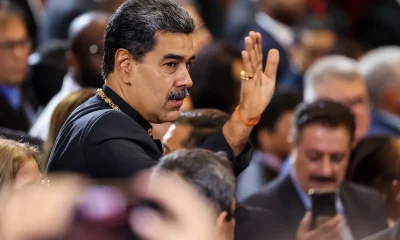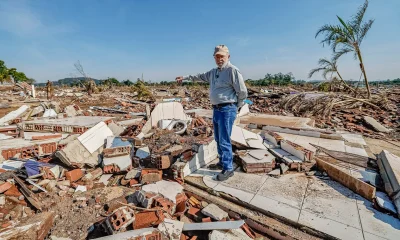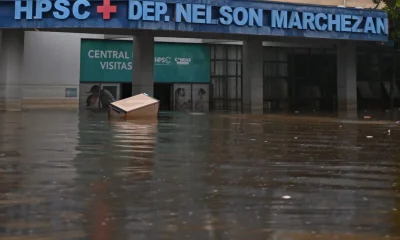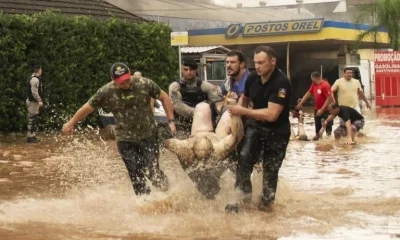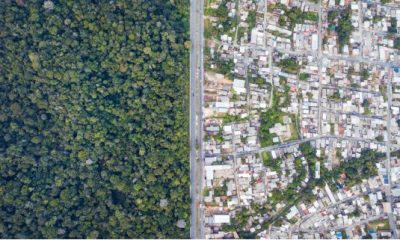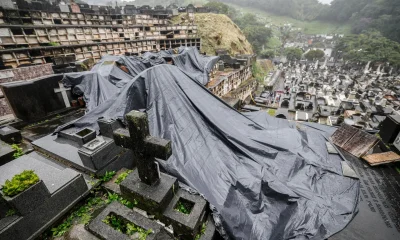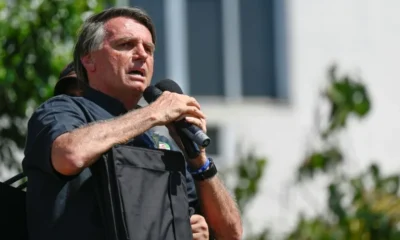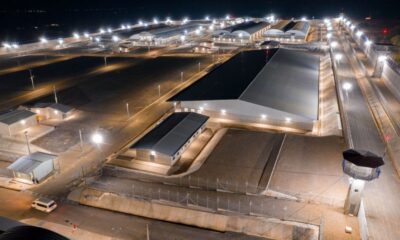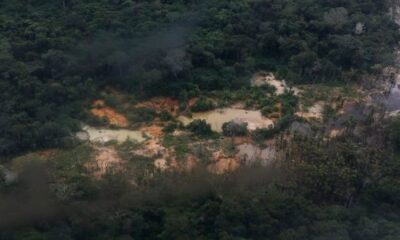International
‘Progress destroying nature’: Brazil dam fuels fears for river
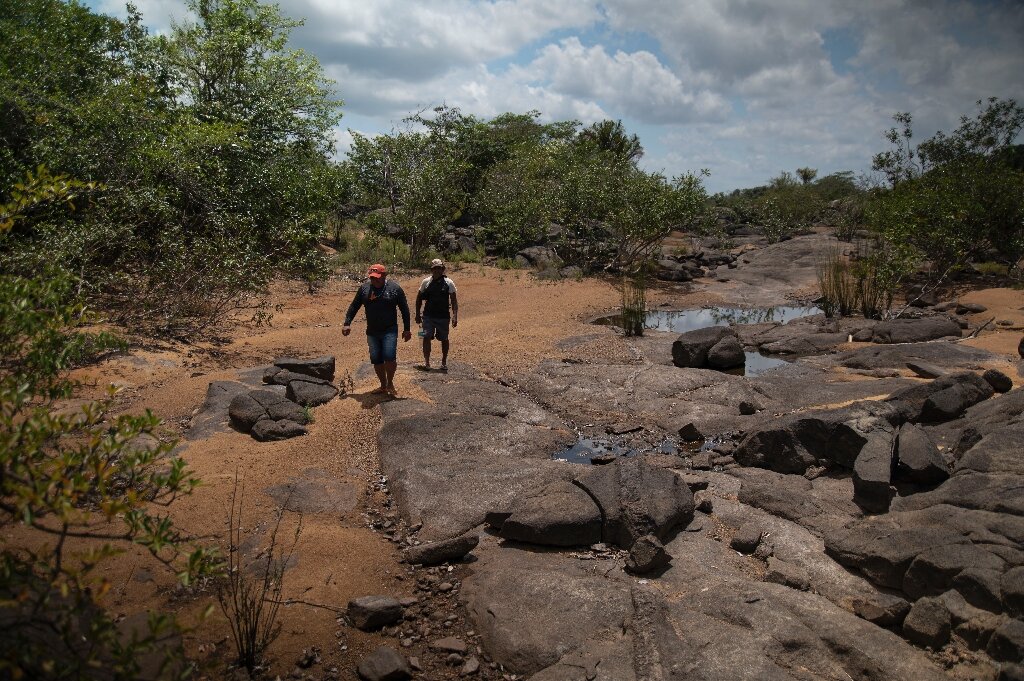
| By AFP | Carlos Fabal with Joshua Howat Berger in Rio de Janeiro |
Holding a dead fish, Junior Pereira looks grimly at a puddle that used to be part of Brazil’s Xingu river, a mighty Amazon tributary that has been desiccated here by the massive Belo Monte hydroelectric dam.
Pereira, a member of the Pupekuri Indigenous group, chokes up talking about the impact of Belo Monte, the world’s fourth-biggest hydroelectric complex, which locals say is killing one of the most biodiverse regions on Earth and forcing them to abandon their way of life.
“Our culture is fishing, it’s the river. We’ve always lived on what the river provides,” says Pereira, 39, who looks like a man trapped between two worlds, wearing a traditional Indigenous necklace and a red baseball cap.
He gazes at the once-flooded landscape, which Belo Monte’s water diversion has made a patchwork of puddles dotted with stranded fish.
“We’ve lost our river,” he says.
“Now we have to buy food in the city.”
‘Like a permanent drought’
Stretching nearly 2,000 kilometers (1,250 miles), the Xingu ebbs and flows with the rainy season, creating vast “igapos,” or flooded forests, that are crucial to huge numbers of species.
They are also crucial to an estimated 25,000 Indigenous people and others who live along the river.
Belo Monte diverts a 100-kilometer stretch of the Xingu’s “Volta Grande,” or Big Bend, in the northern county of Altamira to power a hydroelectric dam with a capacity of 11,233 megawatts — 6.2 percent of the total electricity capacity of Latin America’s biggest economy.
Built for an estimated 40 billion reais ($7.5 billion) and inaugurated in 2016, the dam diverts up to 80 percent of the river’s water, which scientists, environmentalists and residents say is disastrous for this unique ecosystem.
“The dam broke the river’s flood pulse. Upstream, it’s like it’s always flooded. Downstream, it’s like a permanent drought,” says Andre Oliveira Sawakuchi, a geoscientist at the University of Sao Paulo.
That is devastating fish and turtle populations whose feeding and reproduction cycles depend on the igapos, he says.
Sitting by the Xingu’s breathtaking Jericoa waterfalls, which the Juruna people consider sacred, Indigenous leader Giliarde Juruna describes the situation as a clash of worldviews.
“Progress for us is having the forest, the animals, the rivers the way God made them. The progress white people believe in is totally different,” says Juruna, 40.
“They think they’re doing good with this project, but they’re destroying nature and hurting people, including themselves.”
Lula under scrutiny
Proposed in the 1970s, Belo Monte was authorized under ex-president Luiz Inacio Lula da Silva (2003-2010) — who just won a new term in Brazil’s October elections.
As Lula, 77, prepares to take office again on January 1, the project is drawing fresh scrutiny from those hoping the veteran leftist will fulfill his promise to do a better job protecting the Amazon than outgoing President Jair Bolsonaro, who presided over a surge in deforestation.
Touted as a clean-energy source and engine of economic development, Belo Monte has not exactly lived up to expectations.
According to the company that operates it, Norte Energia, the dam’s average output this year has been 4,212 megawatts — less than half its capacity.
A recent study meanwhile found its operations tripled the region’s greenhouse gas emissions — mainly methane released by decomposing forest that was killed by the flooding of the dam reservoir.
A new plan
In 2015, researchers from the Socio-Environmental Institute (ISA) conservation group teamed up with the Juruna to document the devastation.
They have devised a new, less-disruptive way for Belo Monte to manage water, the “Piracema” plan — named for the period when fish swim upriver to spawn.
Researchers say the plan is a relatively small tweak to the dam’s current water usage, adapting it to the natural flood cycles.
Brazil’s environmental regulator is due to rule soon whether to order Norte Energia to adopt it.
The company declined to comment on the proposal, saying in a statement to AFP that it instead “recognizes the plan established in the plant’s environmental licensing.”
The decision is vital, says biologist Camila Ribas of the federal government’s National Institute for Amazon Research.
“When you completely alter the flood cycle, forests die,” she says.
“These are incredibly intricate, interlinked systems. If Belo Monte and other hydroelectric projects disrupt them too much, it could spell the end of the Amazon.”
International
Petro expresses concern over fatal shooting during mass protests in Lima
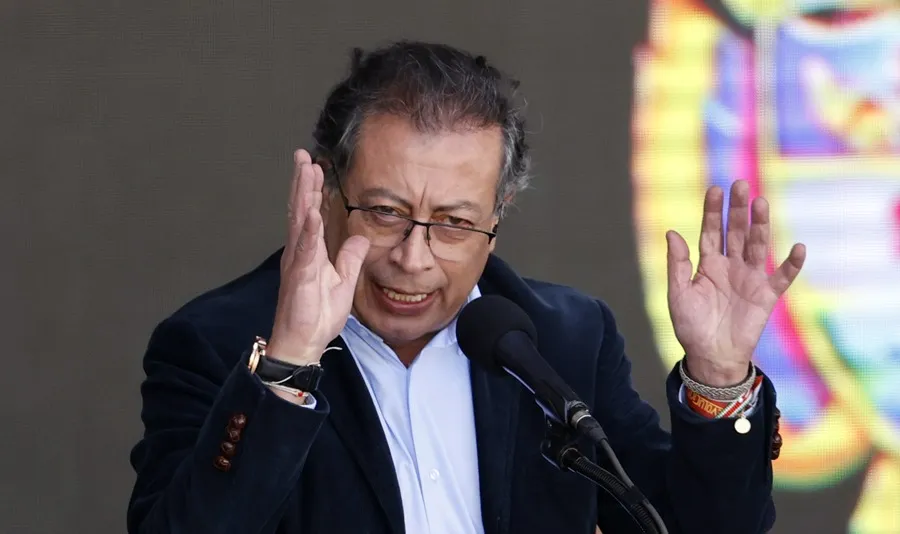
Colombian President Gustavo Petro voiced his “concern” on Thursday over recent events in Peru, following the death of a protester reportedly shot during a massive demonstration in Lima against the government and Congress.
“I must express my concern over the events in Peru. A young artist has been killed in citizens’ protests,” Petro wrote on X (formerly Twitter).
The Colombian leader also noted that in Peru, “a popularly elected president remains imprisoned without conviction,” referring to Pedro Castillo, who led the country from July 2021 to December 2022 until he was removed by Congress following a failed attempted coup.
“This is a blatant violation of the American Convention on Human Rights,” Petro stated, adding, “I hope Peru seeks social and political dialogue to legitimize its public institutions.”
On Wednesday, Peru experienced widespread protests in several cities, with the largest demonstration in Lima in recent years, driven by citizens’ concerns over corruption and public insecurity.
During the capital’s mobilization, the Ombudsman’s Office confirmed the death of Eduardo Ruiz, 32, and reported clashes that left over 100 injured, including 78 police officers and 24 protesters, as well as ten arrests.
The Attorney General’s Office, investigating Ruiz’s death “in the context of serious human rights violations,” confirmed that the protester was shot.
International
Peru’s interim president José Jerí refuses to resign after protester’s death in Lima
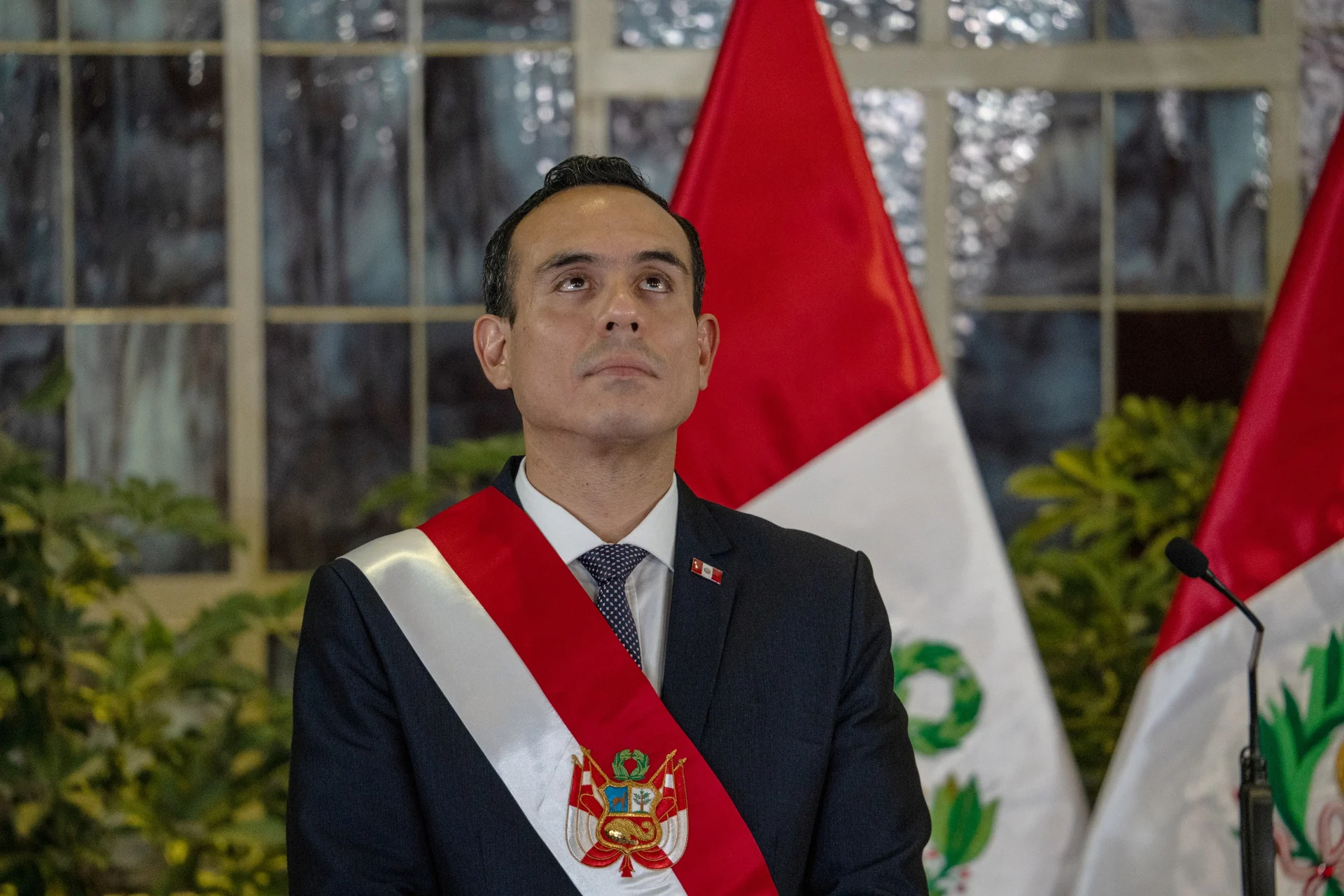
Peru’s interim president, José Jerí, stated Thursday that he has no intention of resigning from the post he assumed last Friday, following the removal of former president Dina Boluarte, despite growing unrest over the death of a protester during massive demonstrations in Lima on Wednesday.
“I will not resign,” Jerí declared outside the Government Palace in Lima, where he returned on foot after making a surprise visit to Congress headquarters alongside Prime Minister Ernesto Álvarez.
Earlier, after leaving the Legislative Palace, the president acknowledged that the country is going through “difficult times” and condemned what he described as “a small group attempting to impose an agenda different from the citizens’ expression of discontent.”
Jerí expressed condolences for the death of Eduardo Ruiz, a 32-year-old man who died during Wednesday’s protest against the government and Congress, amid growing anger over corruption and insecurity.
“We stand in solidarity with his family,” he said, without offering further details about the incident, which has sparked outrage among Peruvians.
The president also described the demonstrations as “a legitimate civic expression” that later turned violent due to “certain groups seeking to provoke chaos by exploiting a peaceful citizen movement.”
“In a state governed by the rule of law, the rights of both demonstrators and security forces must be protected,” Jerí emphasized, adding that “as a result of that situation, this unfortunate death occurred outside the main area where the protest was taking place.”
International
Mexican government prioritizes 191 communities after deadly floods
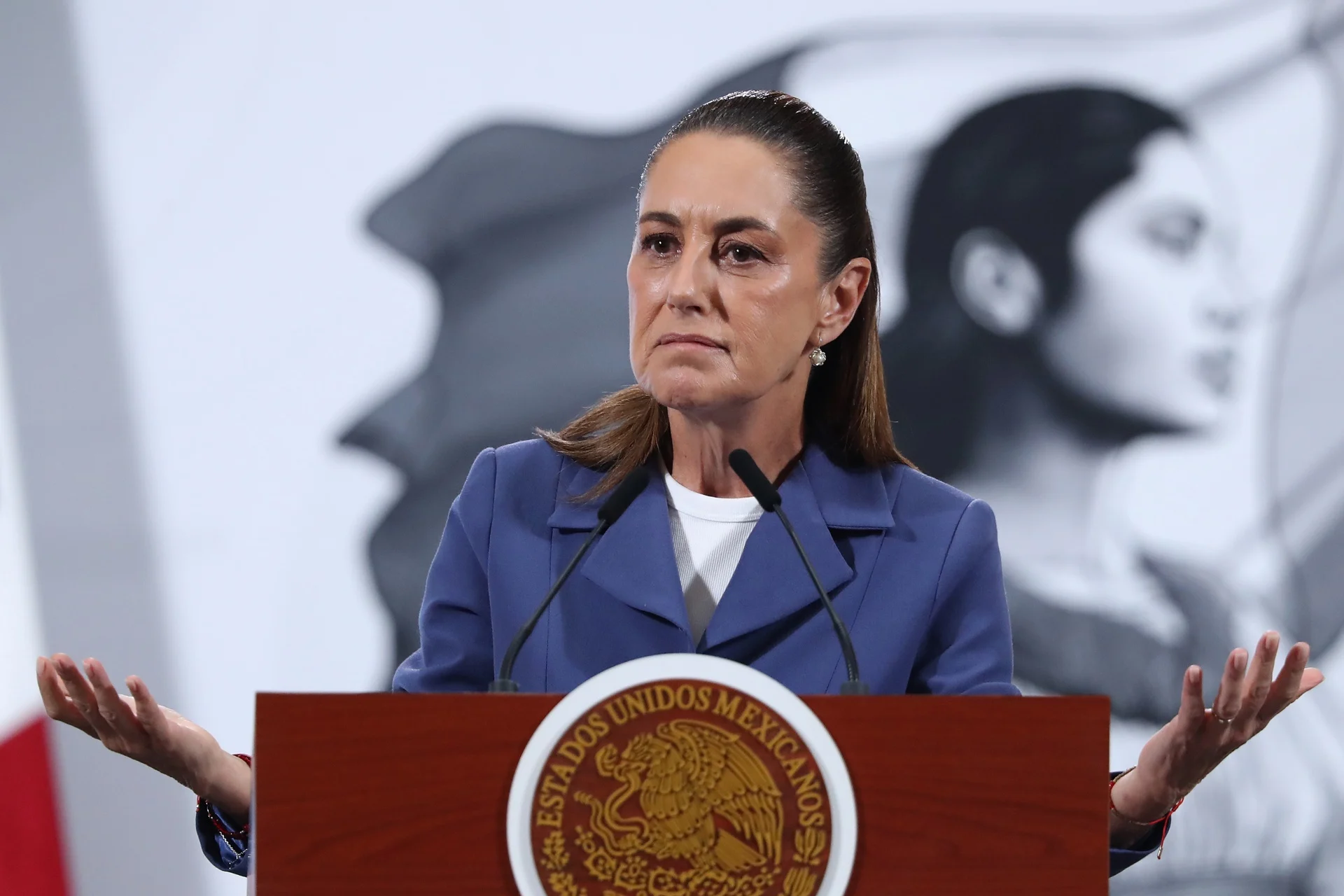
Mexican President Claudia Sheinbaum confirmed on Wednesday that the death toll from recent rains and floods across several central states has risen to 66, while the federal government has activated air bridges and prioritized assistance in 191 isolated communities.
“Unfortunately, 66 people have died, and 75 remain missing,” the president said during her morning press conference. She added that the official death toll will be updated later in a new report.
As of Tuesday, authorities had reported 64 fatalities. Sheinbaum also announced the creation of a public information center to centralize official data on the deceased, missing persons, damaged homes, and cut-off communities.
According to the president, the number of missing persons has decreased thanks to coordination with state authorities.
“Through calls to phone line 079, 103 people who had been reported missing have now been located,” she explained.
Priority Municipalities
The president noted that the federal government has classified 191 communities as ‘priority’, a designation based mainly on the percentage of homes affected.
-

 Central America5 days ago
Central America5 days agoGuatemala arrests first escaped gang member after Barrio 18 prison break
-
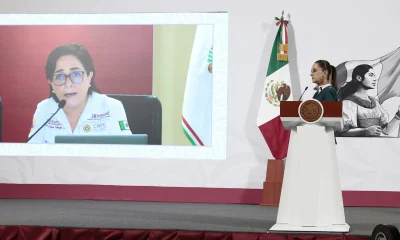
 International5 days ago
International5 days agoMexico reports 64 dead, 65 missing after devastating central region floods
-
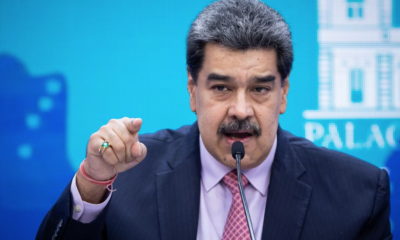
 International5 days ago
International5 days agoVenezuela calls for continued global pressure to secure ‘just peace’ for Palestine
-
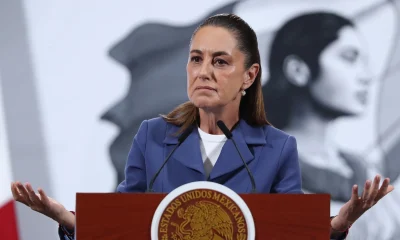
 International3 days ago
International3 days agoMexican government prioritizes 191 communities after deadly floods
-

 International5 days ago
International5 days agoPope Leo XIV to skip COP30 in Brazil but plans future visit, Lula confirms
-
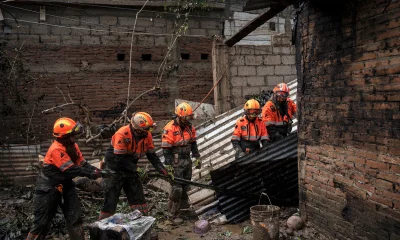
 International4 days ago
International4 days agoSheinbaum: Urgent to restore access to towns cut off by heavy rains
-

 International4 days ago
International4 days agoArmed forces target illegal mines in Northern Ecuador with bombing raids
-

 International4 days ago
International4 days agoVenezuelan media faces fresh restrictions after reporting on opposition leader’s Nobel win
-

 International1 day ago
International1 day agoPetro expresses concern over fatal shooting during mass protests in Lima
-

 International3 days ago
International3 days agoNew road and bridge explosions raise alarm amid indigenous protests in Ecuador
-

 Central America1 day ago
Central America1 day agoNicaragua grants 2,500-hectare mining concession to chinese firm in protected region
-

 International4 days ago
International4 days agoCaracas shuts embassy in Oslo without explanation following Machado’s Nobel win
-
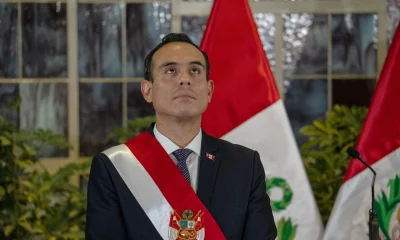
 International1 day ago
International1 day agoPeru’s interim president José Jerí refuses to resign after protester’s death in Lima
-

 Central America1 day ago
Central America1 day agoPanama’s president accuses U.S. Embassy official of visa threats amid China tensions
-

 Central America9 hours ago
Central America9 hours agoEnvironmental groups denounce Nicaragua’s mining deals as ‘ecocide’ in protected areas



























